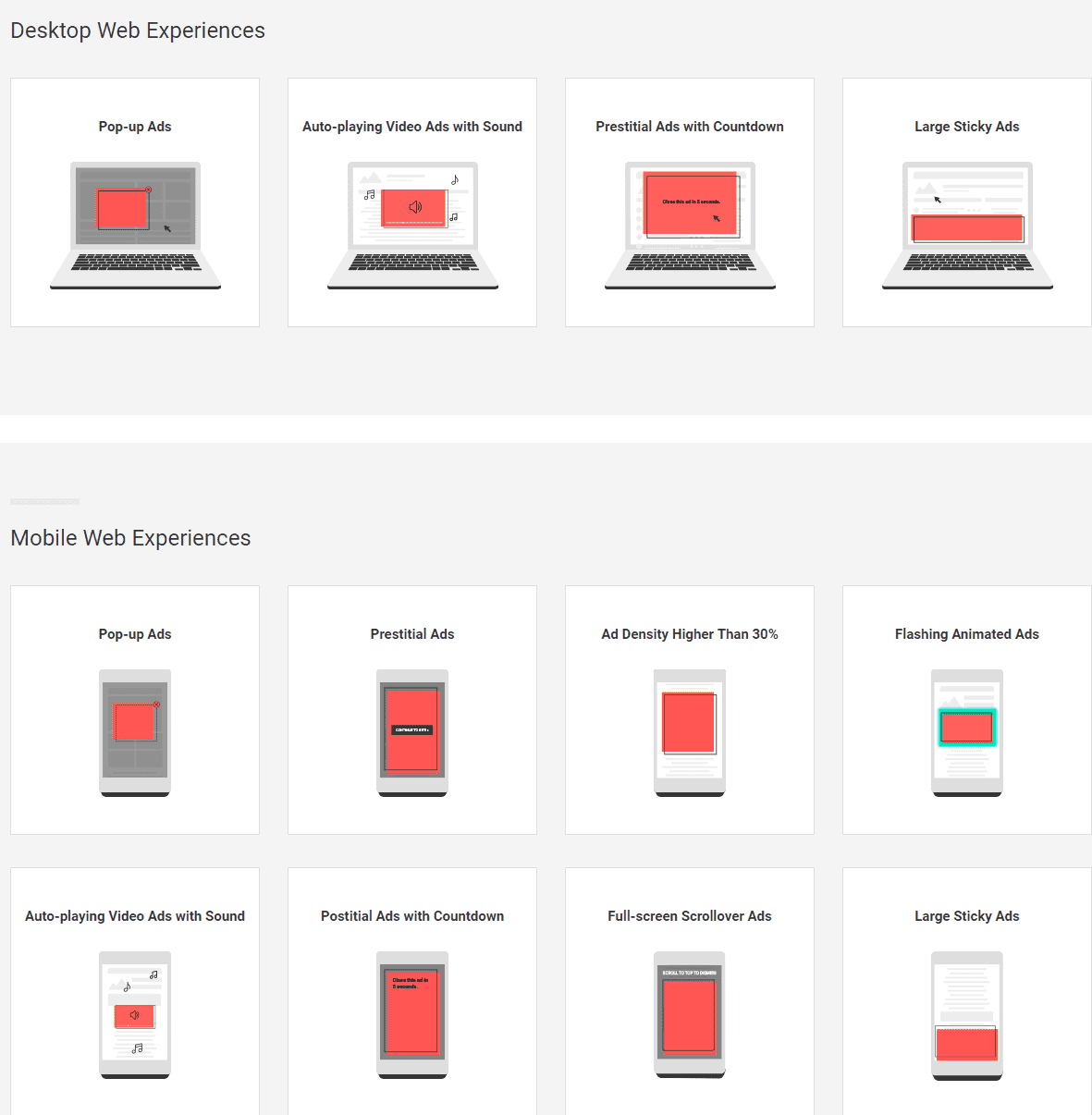
Last June Google announced plans to intercept malicious ads, now officially launched.
On the PC and mobile side, 12 types of malicious ads Google intercepts include auto-playing video ads with sound, pop-up ads, ads that make up 30% of the content, flashing animated ads, and more.

Google said these 12 types of malicious ads are from Coalition for Better Ads. This alliance is an industry group dedicated to improving the user’s online advertising experience and is co-founded by the International Trade Association and many online media companies including Google, Microsoft, Facebook, The Washington Post, and the Advertising Network.
These 12 types of malicious ads are also referred to by the consortium as “better ad standards,” based on user surveys. According to reports, a total of 25,000 users from North America and Europe, accepted the Union survey on the different types of online advertising preferences.
Image: betterads
Google said it will evaluate web pages for each site based on “Better Advertising Standards,” and the site will receive notifications of assessed passage, warning, or failure status. Website operators can view ad experience reports through Google Search Console, detailing violations of standards and appealing assessment results.
To prevent ads on their site from being blocked by Google, websites such as Forbes, The Los Angeles Times, the Chicago Tribune and InTouch Weekly have all changed their page ad settings before the service went live.
According to the Wall Street Journal, more than 59% of Internet users use Google Chrome, and about $ 3 out of 10 dollars spent on digital advertising flows into Google’s pocket.
While Google said blocking these malicious ads is intended to enhance the user experience, others believe Google has had a significant impact in choosing which types of ads to block. A Coalition for Better Ads member said the ad standard was created entirely by Google, reducing distracting advertising and boosting Google’s advertising profits.
Some who object to “better advertising standards,” said advertisers may choose to place more ads on Google properties or on other Google products in order to avoid blocking their own ads. Some people also worry that this standard will be implemented in opaque place.
However, the service to intercept malicious ads on the line, users can no longer download third-party plug-ins to intercept ads, Google also saves a whitelist of these plug-in costs.